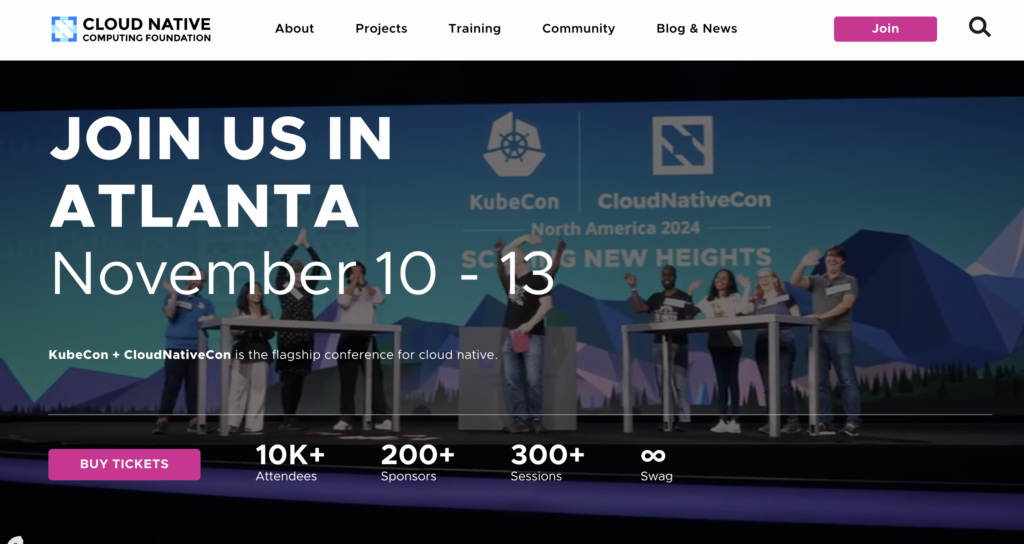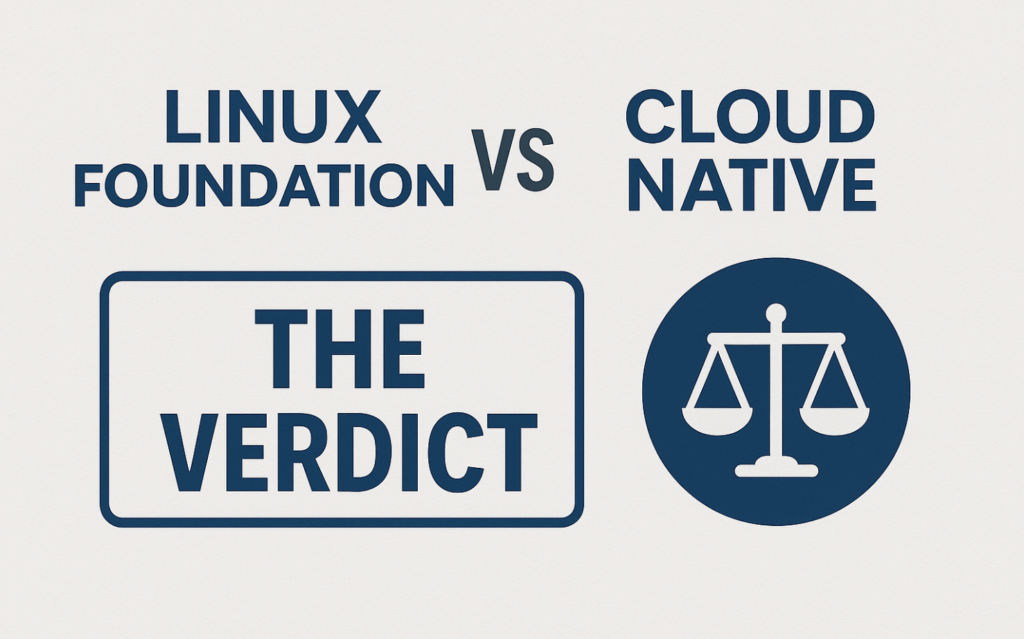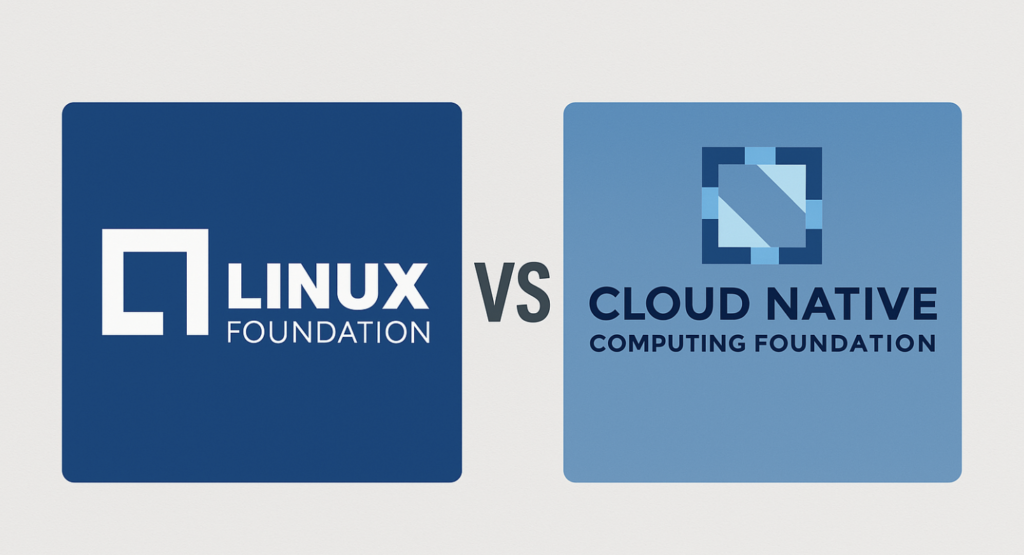In the world of open source, not all foundations are created equal. Two names frequently come up in the same breath — the Linux Foundation and the Cloud Native Computing Foundation (CNCF). But they are not competitors; rather, CNCF is a child of the Linux Foundation, focused on a particular slice of the ecosystem. Yet the differences in their mission, reach, structure, and strategic importance are significant — and favor Linux’s central role in the modern stack.
In this article, we’ll compare and contrast Linux Foundation vs CNCF — their origin stories, governance, ecosystems, strengths and limitations, and how Linux remains foundational to everything both do.
Origins and Relationship
Linux Foundation: The Umbrella for Open Source
The Linux Foundation (LF) was founded in 2000 (as the Open Source Development Labs, later merged with the Free Standards Group) to foster, protect, and promote Linux and other collaborative open source projects. Over time, its remit expanded well beyond just the kernel. Today, it hosts, incubates, and supports a large portfolio of open source projects spanning domains from networking, blockchain, edge computing, security, hardware, and more.
One of its core value propositions is that it provides infrastructure, legal backing, governance best practices, community support, and neutral oversight for open source initiatives. It “pays it forward” by applying what it has learned from running large projects (like Linux) to newer ones.

CNCF: The Cloud Native Specialist Under Linux
The Cloud Native Computing Foundation (CNCF) was launched in 2015 to provide a home for the growing ecosystem around containers, microservices, orchestration, and related cloud-native technologies. CNCF is a sub-foundation under the Linux Foundation: “The Linux Foundation is the parent of CNCF. We are one of the LF’s largest sub-foundations.”
In other words: Linux Foundation is the broad umbrella, and CNCF is its specialist arm in the cloud native space. Because of that, comparisons between them are more about scope, role, and emphasis than “which is better” in the abstract.
Mission, Focus & Scope
Linux Foundation: Broad, Foundational, and Cross-Domain
The Linux Foundation’s mission is to accelerate the adoption of open source technologies across industries. It does this by providing common infrastructure, funding, governance, legal/IP support, event organizing, training, certification, research, and more. Its goal is to reduce friction for open source communities and help scale projects to critical mass.
Under its umbrella are dozens of major projects (e.g. Hyperledger, Zephyr, RISC-V, OpenBMC, DPDK, and many others) that touch domains as diverse as distributed ledgers, embedded systems, networking, standards, hardware, and AI/ML. For example, DPDK (Data Plane Development Kit) is hosted by the Linux Foundation and is a high-performance packet processing library widely used in networking.
Because it is not wedded to just one domain, LF has flexibility to seed, support, and connect projects across domains, encouraging cross-pollination and synergies.
CNCF: Focused on Cloud Native Infrastructure
CNCF’s mission is narrower but deep: to “make cloud native computing ubiquitous” by nurturing and sustaining the ecosystem around containerization, orchestration, microservices, infrastructure as code, observability, service mesh, etc.
The CNCF maintains a “graduation / incubation / sandbox” model for projects. It provides services (mentoring, infrastructure, branding, community support) to accelerate project maturity and adoption.
Its portfolio includes marquee open source projects such as Kubernetes, Prometheus, Envoy, Helm, OpenTracing, gRPC, and many more. CNCF also runs KubeCon + CloudNativeCon, a flagship event bringing together developers, vendors, and users of cloud native tech.
In short: CNCF brings domain expertise, community building, and governance specifically to the cloud native world.

Governance, Structure & Process
Linux Foundation’s Governance Model
Because LF hosts many projects, its internal governance model is relatively light and standardized — providing a framework (via LFX, etc.) that projects can adopt rather than heavy top-down control. It offers legal, administrative, trademark, and policy scaffolding so open source communities can focus on code, community, and adoption.
That said, each project under LF often has its own technical steering committee (TSC), board or governing body, and meritocratic contributor model. The Linux Foundation ensures neutrality, acts as a fiduciary entity, and helps enforce best practices (licenses, contributor agreements, IP policies, etc.) across its projects.
CNCF’s Project Lifecycle & Oversight
CNCF, being specialized, has a more hands-on approach. Projects under CNCF move through levels: Sandbox → Incubation → Graduated, with clearly defined criteria around community size, governance, adoption, and sustainability. The CNCF Technical Oversight Committee (TOC) guides project acceptance and maturation.
CNCF also provides project services (infrastructure, CI/CD pipelines, marketing, documentation support, community building) to help new projects succeed. Projects also are supported in how they adopt branding or certifications.
When a project becomes inactive or loses momentum, it may be archived (and possibly reactivated later) — the archiving mechanism is handled by the CNCF (but still under LF’s hosting umbrella).
Because CNCF’s domain is narrower, it can impose stricter, more domain-tailored standards for project health, interoperability, and performance.
Ecosystems & Projects
Linux Foundation’s Breadth
The Linux Foundation’s strength is the breadth of its ecosystem. It hosts many “horizontal” infrastructure projects not confined to cloud-native. A few highlights:
- Hyperledger: A consortium and project umbrella for enterprise blockchains and ledgers under LF. Wikipedia
- OpenBMC: A Linux Foundation project implementing open BMC firmware stack across hardware platforms. Wikipedia
- DPDK: High-performance packet processing library under LF’s governance. Wikipedia
- Zephyr, RISC-V, Open Mainframe Project, and more.
LF thus operates in domains overlapping hardware, networking, blockchain, security, embedded systems, and more. This makes it uniquely positioned to support projects that cross domain boundaries (for example, edge computing combining hardware, networking, and container orchestration).
CNCF’s Depth in Cloud Native
CNCF’s ecosystem is strong, focused, and deeply influential. Some of its prominent projects:
- Kubernetes — probably the flagship cloud native orchestration system
- Prometheus — monitoring and alerting
- Envoy — edge / L7 proxy
- Helm, gRPC, Fluentd, Linkerd, OpenTracing, containerd, etc.
- Backstage (developer portal framework) is an incubating CNCF project.
- Kubeflow, recently trending in AI / ML infrastructure, has entered the top CNCF projects.
CNCF tracks metrics of project velocity and adoption, and publishes periodic reports showing which projects are growing.
By concentrating efforts on this domain, CNCF can enforce interoperability, define best practices, support tooling, and provide a curated map of the “cloud native landscape.”
Because cloud native is one of the biggest growth areas in modern infrastructure, CNCF’s portfolio is extremely strategic and visible.
Services, Training & Certifications
Linux Foundation’s Broader Platform
LF provides training and certifications across multiple domains. Some are conducted in cooperation with CNCF (especially those involving cloud native technologies). For example, LF and CNCF jointly launched the Istio Certified Associate (ICA) certification. Linux Foundation
LF also handles events (LinuxCon, Open Networking Summit, EdgeX Foundry summits, etc.), legal/IP services, research, funding, media, mentorship, and incubator programs across projects.
Because LF covers many domains, it can cross-leverage training, events, and communities — for instance, people working in blockchain might also engage with cloud native, embedded, or networking topics.
CNCF’s Certification & Domain Credibility
CNCF offers domain-specific training and certification, especially for Kubernetes and related cloud native tools. The Certified Kubernetes Administrator (CKA) is perhaps the most well-known — it’s spearheaded by CNCF in partnership with LF. CNCF+2CNCF+2
CNCF’s certification programs are marketed as vendor-neutral proofs of competence in cloud native infrastructure. CNCF Because it’s specialized, CNCF can ensure certifications keep pace with evolving cloud native tech.
These certifications lend credibility to professionals and help companies vet hires or training programs. It also reinforces the centrality of CNCF’s eco-stack in real-world adoption.
Overlap, Collaboration & Interdependence
Because CNCF is nested under LF, they often collaborate on initiatives. For example:
- The Linux Foundation and CNCF jointly expanded a partnership with Unified Patents to defend open source software from patent trolls (non-practicing entities). Linux Foundation+2CNCF+2
- Many training, certification, and educational initiatives are co-branded or jointly delivered by CNFC and LF.
- LF can host project infrastructure (CI/CD, build servers, legal frameworks) that CNCF relies on.
So while CNCF focuses on cloud native, it relies on LF’s depth, neutrality, infrastructure, and legal umbrella. The success of CNCF reinforces the reputation and reach of the Linux Foundation as the ultimate steward of open source infrastructure.
Strengths, Weaknesses & Strategic Positioning
Why Linux Foundation Is “Best”
- Breadth and Influence: LF spans many domains, meaning it can influence cross-cutting infrastructure trends, not just one niche.
- Neutral and Trusted Custodian: Because it has a long history (anchored by Linux) and handles legal, IP, governance, and community infrastructure, it is viewed as a credible, neutral steward.
- Cross-Domain Synergy: Projects under LF can benefit from each other: e.g. edge computing projects combining networking, hardware, container orchestration.
- Institutional Strength: LF already has strong membership across big tech, enterprises, governments — that credibility gives it resources to invest broadly.
- Longevity and Stability: Linux is mature and deeply embedded in infrastructure; the Foundation’s track record gives confidence to new projects.
In other words, Linux Foundation is the bedrock on which many domain-specific foundations (like CNCF) can safely stand.
Where Linux Might Be Limiting
- Lack of domain focus: Because LF covers so many domains, it cannot micro-manage domain trends or apply deep domain knowledge as precisely as CNCF does in cloud native.
- Potential dilution: Success in one area might divert attention or resources from others; managing so many projects can lead to overhead, conflicting priorities, or governance challenges.
- Perception of centralization: Some in communities might fear that LF’s umbrella becomes too top-down or bureaucratic if not careful.
CNCF’s Strengths & Limitations
Strengths:
- Domain Authority: In cloud native, CNCF is one of the most respected names — its “stamp of approval” carries weight.
- Focus & Discipline: With a narrower scope, CNCF can enforce high standards for project health, documentation, interoperability, performance, community, etc.
- Ecosystem Clarity: CNCF curates the cloud native landscape, making it easier for adopters to navigate choices, avoid fragmentation, and build interoperable systems.
- Momentum: Because cloud native is one of the fastest-growing infrastructure domains, CNCF is riding a wave of adoption, investment, and attention (e.g. AI/ML, microservices, serverless). CNCF
Limitations:
- Domain constraint: It cannot by itself expand into unrelated domains (e.g. blockchain, hardware, embedded). That requires LF or other foundations.
- Dependence on LF support: CNCF relies on LF for legal, administrative, infrastructure services.
- Vendor politics and neutrality: As many vendors compete in cloud native (AWS, Google, Microsoft, Red Hat, etc.), maintaining neutrality and fair governance is complex.
But overall, CNCF’s domain specialization gives it a powerful leverage in cloud infrastructure evolution.
Use Cases & Real-World Impact
- Kubernetes’s journey: Kubernetes was originally developed at Google, then donated to CNCF. Under CNCF, it matured, gained broad community support, and became the de facto standard in container orchestration. This success owes both to CNCF’s governance/model and LF’s infrastructure backing.
- Adoption in AI/ML: CNCF projects are increasingly foundational to AI and ML infrastructure. In 2024, Kubeflow entered the top 30 CNCF projects, showing cloud native’s role in AI workloads. CNCF
- Cross-domain projects: Some projects straddle domains and benefit from LF’s umbrella but can leverage CNCF’s visibility. For example, Notary / TUF (software update security frameworks) have ties to both security and cloud native worlds. Wikipedia
- Patent defense and legal backing: The joint LF + CNCF partnership with Unified Patents helps protect open source and cloud native projects from frivolous patent litigations. Linux Foundation+1
These show how Linux (and LF) continue to underpin foundational infrastructure while CNCF pushes the frontier in cloud native.
The Future Outlook & Why Linux Remains Central
Trends to Watch
- Edge, IoT & Cloud Native Convergence: As cloud native principles extend to edge, fog, IoT, the lines blur — and LF’s broader infrastructure portfolio may play a bigger role in connecting these domains.
- AI / ML Infrastructure: More AI/ML systems are being deployed on cloud native infrastructure; projects like Kubeflow will deepen CNCF’s relevance. CNCF
- Security, Supply Chain, Compliance: As open source usage increases, foundations will need to focus more on software supply chain security, licensing, compliance, and IP — roles Linux Foundation is already engaged in.
- Interoperability & Standardization: As cloud native ecosystems become richer but more fragmented, the role of a neutral foundation to enforce interoperability and standards becomes critical.
- Community sustainability and funding models: Both LF and CNCF will need to innovate how to fund long-term maintenance, reduce burnout, and scale infrastructure.
Why Linux (and the Linux Foundation) Still “Wins”
Linux itself is ubiquitous: from mobile to servers, from embedded systems to cloud — it forms the groundwork upon which modern infrastructure is built. The Linux Foundation, as steward of many critical infrastructure projects, remains the anchor of open source health.
Even in the cloud native era, every container, orchestration engine, and microservice eventually runs (or interacts) with Linux kernels, networking stacks, or lower-level infrastructure components. Without strong foundational support, the higher layers (which CNCF focuses on) are vulnerable.
By virtue of its breadth, neutrality, institutional depth, and infrastructure muscle, the Linux Foundation ensures that open source projects have a secure, stable home. CNCF, in contrast, is an ideal “specialist wing” driving forward a hot domain — but it is ultimately built on and defended by Linux and its community.

Conclusion & Key Takeaways
- The Linux Foundation is the broad umbrella, foundational steward, and enabler of open source infrastructure across domains; CNCF is its focused child aiming to grow and curate the cloud native ecosystem.
- Linux Foundation provides the legal, governance, training, legal/IP, and infrastructure backbone, while CNCF brings domain specificity, ecosystem curation, project maturation, and credibility in cloud native tech.
- CNCF cannot function without LF’s support, but CNCF adds value by focusing deeply on cloud native trends.
- As cloud native grows, edge computing and AI/ML evolve, the intersection and overlap between LF and CNCF will deepen — and Linux’s foundational strength will remain central.
- In the contest of “Linux Foundation vs CNCF,” it’s not really a contest — Linux Foundation is the base, the giant on whose shoulders CNCF stands. As such, Linux (and the Linux Foundation) remains “best” in the sense of being the indispensable backbone of modern open source infrastructure.


